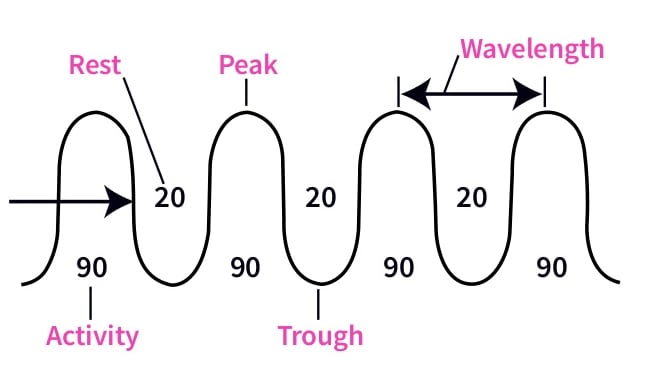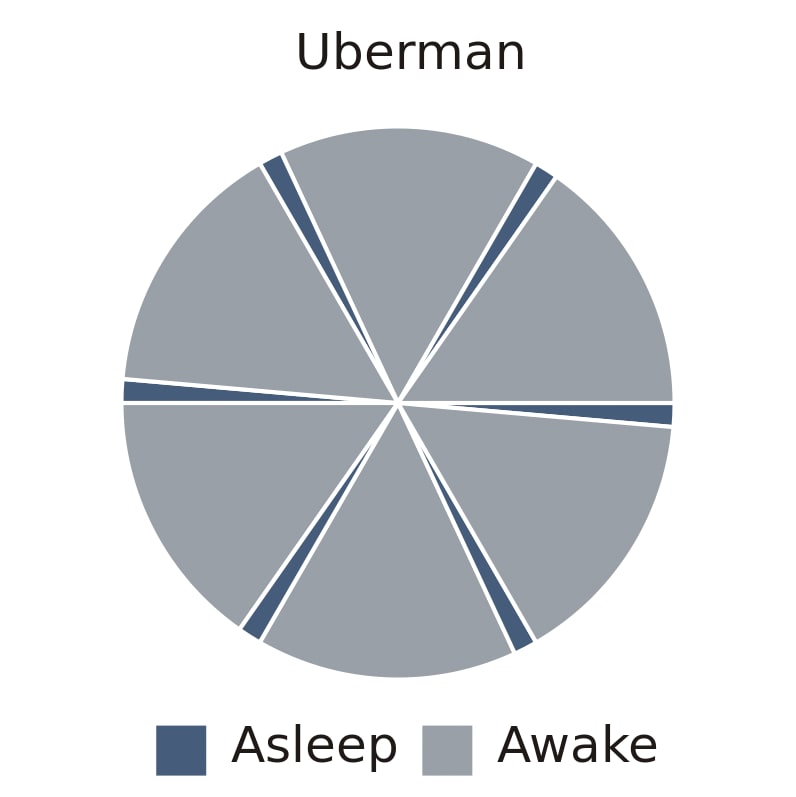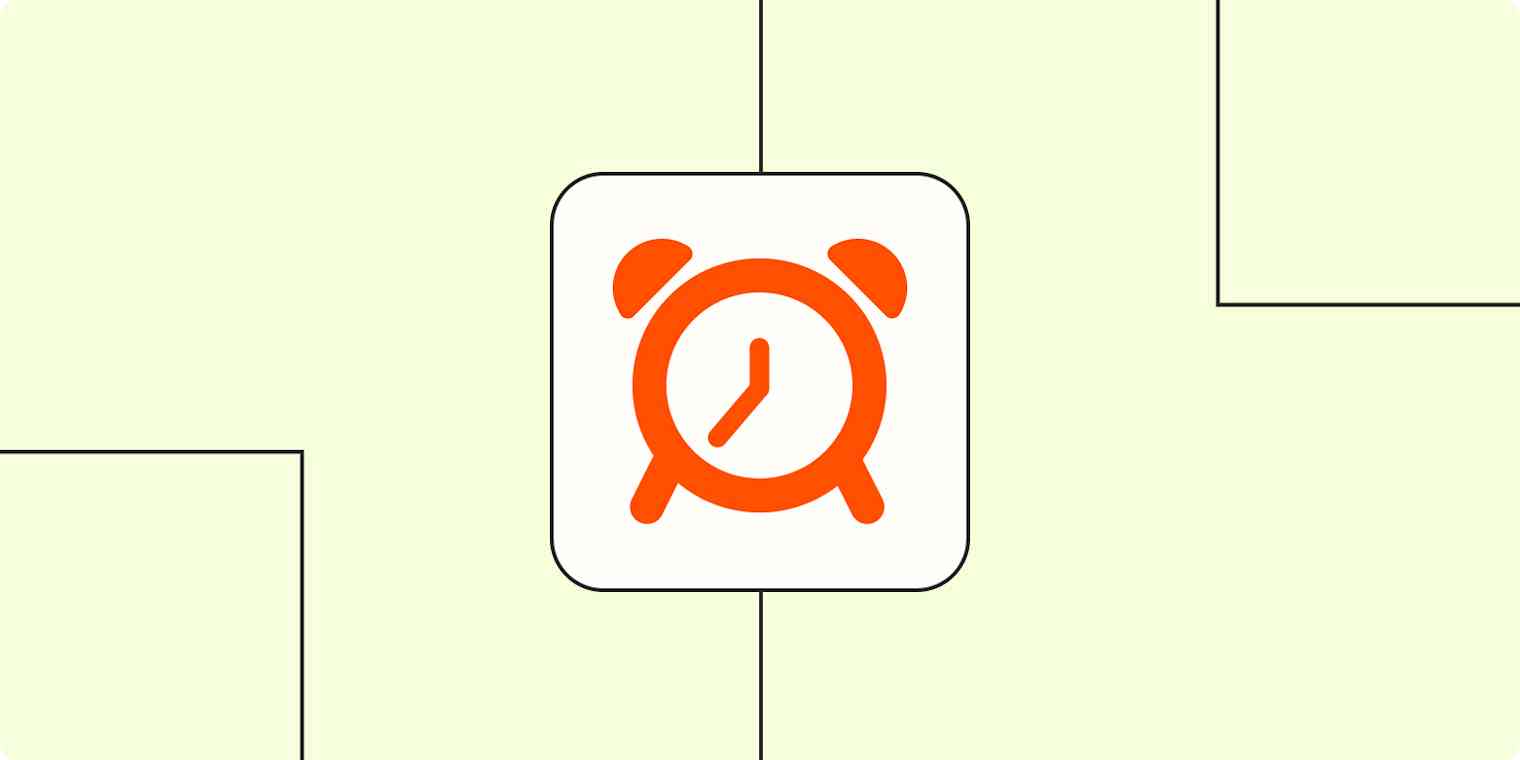These days, it feels like optimization is everything. People want to know the best way to eat, to sleep, to parent their kids—even to fold their underwear. And productivity is no exception: Sometimes, it feels like my TikTok feed is nothing but scheduling hacks.
You might try drawing inspiration from successful people throughout history—only to realize that productive people use wildly different scheduling techniques depending on their circumstances, personalities, and energy levels. Winston Churchill, for example, supposedly woke up at 7 a.m. and worked from bed for several hours, before getting up for a long lunch and working late into the night. On the other end of the spectrum, Toni Morrison began writing before dawn out of necessity when she had young children and a full-time job—a habit that stuck with her even after she became a well-known author.

The takeaway here is that there's no "one size fits all schedule" for maximum productivity. You need to find the scheduling method that works for you, not for some random influencer on the internet.
With that in mind, here are five different daily scheduling methods you can try. Some of these methods are pretty straightforward—while others are…well, let's just say they're less conventional.
The time blocking method
Time blocking simply means planning out your day in advance and dedicating specific hours to accomplish specific tasks. Ok, that sounds really basic—what else is scheduling, other than planning out when you'll do stuff?
But time blocking is deceptively challenging. This method requires enough foresight to determine in advance what you'll do and exactly when you'll do it—and then, you have to actually execute that plan. So if you're someone who struggles with executive function, this might not be the method for you.

That said, time blocking can be incredibly effective if you feel like you're drowning in tasks, because it allows you to be both proactive and reactive.
Proactive blocks are when you focus on important tasks that you must get done—like making progress on important projects, drafting important documents, or sketching out a prototype for your next great product.
Reactive blocks are when you allow time for requests and interruptions, such as email and impromptu meetings.
For example, you could schedule your most challenging tasks for the first two hours of the day and plow through your inbox during the afternoon. This blocking technique allows you to work undistracted and still know you'll get to tasks that require less brain power but still matter—things like emails and phone calls.
Whereas standard to-do lists present you with a list of tasks to complete in your own time, time blocking provides you with a list of tasks and a specific time frame to complete each task. That's great if, like me, you struggle with putting off the small things, like making a simple phone call. The pressure of knowing that this is the only time I have to call the dentist is just enough to make me pick up the phone and dial.
By forcing yourself to work within a rigid structure and to accomplish tasks in a given time, you're forced to focus on every activity.
Productivity guru Cal Newport swears by the time blocking method, saying:
Sometimes people ask why I bother with such a detailed level of planning. My answer is simple: it generates a massive amount of productivity. A 40 hour time-blocked work week, I estimate, produces the same amount of output as a 60+ hour work week pursued without structure.
Time blocking definitely isn't the right answer for everyone, but it's a good place to start if you're feeling overwhelmed—or if you're juggling a lot of different projects and tasks.
Find the best tool for the job:
The most important task (MIT) method
The MIT method is all about focusing on what's essential. Rather than writing out a massive to-do list and trying to get it all done, this method focuses on determining the 1-3 tasks that are absolutely essential—and then relentlessly focusing on those tasks during the day. It's not that you never do more than three tasks in a day, but that you don't do anything else until you've completed the three essential tasks.
The reality is that a lot of the time, there are only a few essential things to do. Yes, there are a thousand voices clamoring for our attention, but most of those voices aren't crucial. The notifications blowing up your phone and the emails filling your inbox can all wait. If you can complete your 1-3 essential tasks, everything else becomes secondary—or maybe even unnecessary.
That's the core idea of Gary Keller and Jay Papasan's book The ONE Thing: "What's the ONE Thing you can do this week such that by doing it everything else would be easier or unnecessary?"
Once you determine your 1-3 most important tasks, schedule them first in your day. You can then make progress on essential items before you get bombarded by distractions. MIT works great in conjunction with the time blocking method, because it helps you earmark your initial hours for your most important tasks. Email, phone calls, and meetings come later, after you've completed those essential tasks.
By focusing on your most important tasks, every day becomes productive. You'll never have a day where you feel like you've wasted your time. Productivity expert James Clear puts it this way:
If you do the most important thing first each day, then you'll always get something important done. I don't know about you, but this is a big deal for me. There are many days when I waste hours crossing off the 4th, 5th, or 6th most important tasks on my to do list and never get around to doing the most important thing.
It's kind of like the Eat the Frog method in that way (another daily scheduling method worth considering).
Find the best tool for the job:
The Pomodoro Technique

The Pomodoro Technique is all about working in short, massively productive, intensely focused bursts, and then giving yourself a brief break. It's incredibly simple, in that all it requires is a timer, and it allows you to break down a large task into manageable intervals.
Here's how it works:
Choose a task
Set your timer for 25 minutes
Work on the task until the timer ends
Take a short break (around 5 minutes)
Every four Pomodoro sessions, take a longer break (15-30 minutes)
This technique allows you to accomplish a significant amount over the course of the day while still taking adequate breaks. The relatively short time of each session also allows you to intensely focus without becoming mentally fatigued.
Some people absolutely swear by the Pomodoro Technique. Paul Klipp, president of Lunar Logic's Polish branch, says this about using Pomodoro:
You might think that a person could do 16 of these cycles in a day. I'm lucky to get more than two in a day without interruptions. But in those 50 minutes I get more done than I do in the other seven hours of my work day, at least in terms of advancing the most important aspects of my most important projects.
Despite its beautiful simplicity, there are some downsides to the Pomodoro Technique. Pomodoro sessions are supposed to be uninterrupted periods of focus, meaning you can't pause mid-session and then pick it back up later. If a coworker stops by and asks for a few moments of your time, you need to either politely decline or stop the session altogether.
However, as Klipp noted above, it's possible to accomplish a significant amount in only a few sessions.
Find the best tool for the job:
90-minute focus sessions
For most people, the natural rhythms of their body are just something that happen in the background. But understanding your body's rhythms can help boost productivity.
For example, have you ever wondered why you crash every day at 2:30 p.m.? Well, the human body operates on cycles called ultradian rhythms. During each of these cycles, there's a peak when we're most energized, as well as a trough when we're exhausted. And what happens at 2:30 p.m.? You guessed it: a trough.

We've been trained by the 8-hour workday to assume that we should work steadily from 8 a.m. to 5 p.m. with only a break for lunch, to exert maximum output from the start to finish of the workday. And while this method certainly allows managers to stay on top of employees, it hampers productivity.
The goal of the 90-minute focus technique is to align more closely with the energy peaks and troughs that occur throughout your day, instead of forcing a false schedule: work 90 minutes, then rest for 20-30 minutes.
Working in 90-minute bursts allows you to correlate your maximum energy levels with your task list, which then gives your productivity a major boost. You're working with your body instead of against it. As the CEO of The Energy Project, Tony Schwartz, puts it:
By intentionally aligning with my body's natural rhythms, I've learned to listen to its signals. When I notice them, it usually means I've hit the 90-minute mark. At that point, I take a break, even if I feel I'm on a roll, because I've learned that if I don't, I'll pay the price later in the day.
Of course, this system does have its drawbacks. If your boss comes into your office and finds you napping on the floor, she may not be pleased, even when you explain that you're working in conjunction with your ultradian rhythms (and, I might add, improving your memory). And there will be deadlines which give you no choice but to put your nose to the grindstone.
But when you don't find yourself up against the clock, you may want to consider the natural rhythms of your body when deciding on your scheduling method. Your body might not fall exactly in line with the 90-minute cycles, but monitor your energy levels throughout the day for a few weeks to see if you can find a pattern for yourself.
Polyphasic sleep method

This is a somewhat bizarre scheduling method that only works for a few select people—but if it works for you, that's great.
It works like this: Most people are monophasic sleepers, meaning they get their daily sleep in one chunk (or phase). Biphasic sleepers get their sleep in two smaller chunks, such as four hours in the morning and four hours in the late evening. Polyphasic sleepers take this method to the extreme, breaking up sleep into multiple short phases, which allows for less sleep overall and significant increases in productivity. The amount of sleep in each phase can vary, with some people sleeping only in 20-minute naps and others grabbing larger chunks of sleep supplemented with naps.
Eugene Dubovoy is a project manager who has adopted a polyphasic schedule of sleeping 3.5 hours every night supplemented by three 20-minute naps during the day. As a result, he has significantly more time at his disposal and gets much more done than he would otherwise. As he told Business Insider: "The biggest benefit is that I have about two months of extra time each year. Time is the most valuable resource in our lives."
This schedule has some very obvious drawbacks. For one, the effects of breaking your natural circadian rhythms—through working night shifts, for example—are well documented by groups like the American Psychological Association. Steve Pavlina also notes the challenge of having this type of schedule while still trying to maintain a healthy family schedule. And if you miss any of your scheduled sleep sessions, it can significantly throw off your sleep schedule.
I personally can't recommend this method; I would not function well without a full night's rest, and I think the scientific evidence is clear that most people wouldn't either. But if your body naturally works this way, more power to you.
If not, you might instead look into finding your chronotype, so you can schedule your work (and sleep) around your most productive hours.
Finding the ideal mix
Creating your most productive schedule might mean creating hybrids of some of these methods. The MIT method works well with the time blocking method. Three Pomodoro sessions fit neatly inside a 90-minute work session. And the Polyphasic method...well, you might be on your own there.
Regardless of what you choose, scheduling your day is crucial if you want to get stuff done. As Essentialism author Greg McKeown, says: "If you don't prioritize your life, someone else will."
By setting a daily schedule, you ensure that you are the one prioritizing your life.
Keep reading:
Ultradian rhythm illustration by Officevibe. Polyphasic sleep illustration via Wikimedia. This post was originally published in November 2016 by Stephen Altrogge. The most recent update was in February 2024.





